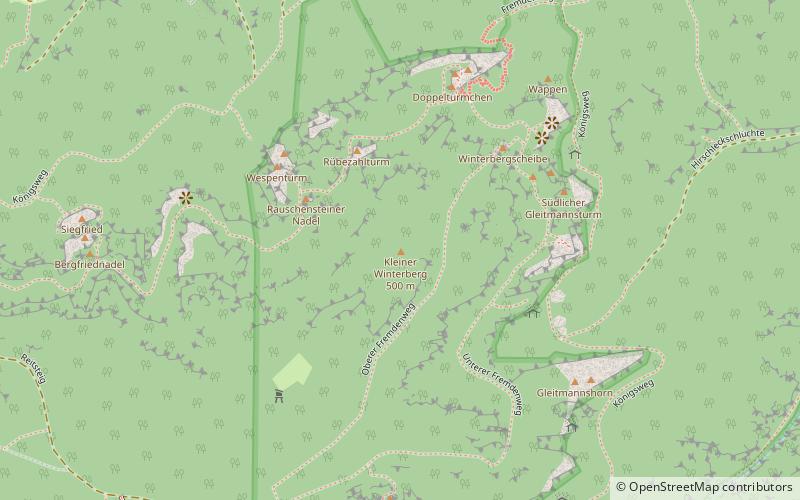Bloßstock


Facts and practical information
Bloßstock is a prominent rock and climbing peak in the Affensteinen in Saxon Switzerland. It forms the northernmost elevation of the Affensteine and is separated by a deep notch from the adjacent Kreuzturm to the south and the adjoining rock reef of the Langer Horn. The more than 90 m high north face drops almost vertically, the rock thus forms a widely visible landmark in the rear Saxon Switzerland and is described as one of the most imposing rock towers in the area.
The rock on the bare stick is mentioned as early as 1592 in the map series of the First Electoral Survey of Saxony by Matthias Oeder. From this is derived the meaning of the name: Bloßer Stock for free rock. In the 19th century it was partly etymologically incorrectly called Blauer Stock or Blaustock.
The rock was first climbed by Heinrich Wenzel, Robert Püschner and Fritz Gerbing in 1899, during the first development of the Saxon Switzerland climbing area. They crossed the Schartenkluft with the help of a tree trunk and then climbed freely up a chimney to reach the summit. Today, the Wenzelweg is rated V according to the Saxon difficulty scale. Before the First World War, other routes followed, such as today's Fehrmannweg by Rudolf Fehrmann in 1906 or the Gipfelstürmerweg first climbed by Max Matthäus in 1911. Since then, a good 30 more climbing routes have been developed on the Bloßstock. Especially in the almost vertical north face, several well-known climbers of Saxon Switzerland have climbed routes for the first time, such as Herbert Richter as early as 1958 on the north face rated VIIIa or Bernd Arnold in 1977 on the central north face. Karlheinz Gonda and Matthias Gäbler are also among the well-known first ascenders of routes on Bloßstock.
Saxony
Bloßstock – popular in the area (distance from the attraction)
Nearby attractions include: Frienstein, Teufelsturm, Schrammsteine, Lichtenhain Waterfall.







